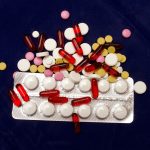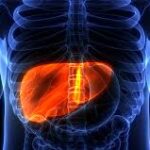10 Signs Your Liver Is Healing

The human liver is a vital organ located in the upper right side of the abdomen, just below the diaphragm. It is one of the largest organs in the body and plays a central role in maintaining various physiological processes necessary for overall health. The liver is made up of specialized cells called hepatocytes, which perform numerous functions critical to the body’s well-being.
The liver’s primary functions include metabolism, detoxification, and bile production. In terms of metabolism, the liver processes nutrients from the food we eat, including carbohydrates, fats, and proteins. It converts these nutrients into usable forms for the body’s energy needs and stores excess glucose in the form of glycogen. When blood sugar levels drop, the liver releases glycogen back into the bloodstream to maintain a steady supply of energy.
As a detoxification organ, the liver filters and neutralizes harmful substances, such as toxins, drugs, and alcohol, to make them less harmful before elimination from the body. It breaks down waste products and converts ammonia, a toxic byproduct of protein metabolism, into urea for safe excretion in the urine.
The liver also produces bile, a greenish fluid that aids in the digestion and absorption of fats in the small intestine. Bile is stored in the gallbladder and released into the intestine when needed to help break down dietary fats, making them easier for the body to absorb.
Common Liver Health Issues
Given the liver’s critical role, it is susceptible to various health issues, some of which include:
- Fatty Liver Disease: This condition occurs when excessive fat builds up in the liver cells. Non-alcoholic fatty liver disease (NAFLD) is linked to factors such as obesity, insulin resistance, and high blood sugar. If left untreated, it can progress to more severe conditions like non-alcoholic steatohepatitis (NASH) and cirrhosis.
- Hepatitis: Hepatitis is an inflammation of the liver, usually caused by viral infections (hepatitis A, B, C, D, and E). Chronic hepatitis infections, especially hepatitis B and C, can lead to liver damage, cirrhosis, and an increased risk of liver cancer.
- Cirrhosis: This is a late stage of scarring (fibrosis) of the liver caused by many forms of liver diseases and conditions, such as hepatitis and chronic alcoholism. Cirrhosis can lead to liver failure and is irreversible in advanced stages.
- Liver Cancer: Primary liver cancer (hepatocellular carcinoma) originates in the liver cells, and secondary liver cancer originates in other parts of the body and spreads to the liver.
- Liver Failure: Liver failure occurs when the liver loses its ability to perform its essential functions. It can be acute (sudden) or chronic (progressive).
- Liver Cirrhosis: Cirrhosis is the result of long-term, continuous damage to the liver and may be due to many different causes, including chronic alcoholism and hepatitis. Each time your liver is injured, it tries to repair itself. In the process, scar tissue forms. As cirrhosis progresses, more and more scar tissue forms, making it difficult for the liver to function.
- Liver Abscess: A liver abscess is a pocket of pus that forms in the liver due to infection. It can be caused by bacteria, parasites, or fungi.
- Gilbert’s Syndrome: This is a common, harmless liver condition where there are mild fluctuations in the levels of a substance called bilirubin in the blood.
- Hemochromatosis: This is a genetic disorder in which the body accumulates too much iron, leading to iron overload in various organs, including the liver.
Symptoms of Liver Problems
Liver problems can manifest in various ways, and the signs and symptoms can vary depending on the specific condition affecting the liver. It’s important to note that some liver diseases may not cause noticeable symptoms in their early stages. However, here are some common signs that may indicate liver problems:
1. Jaundice: Yellowing of the skin and the whites of the eyes is a classic sign of liver dysfunction. It occurs when the liver is unable to process bilirubin properly, leading to its accumulation in the bloodstream.
2. Fatigue: Persistent tiredness and lack of energy can be a symptom of liver problems due to the liver’s role in energy metabolism and detoxification.
3. Abdominal pain and swelling: Pain or discomfort in the upper right side of the abdomen, along with bloating or swelling, can be indicative of liver issues.
4. Unexplained weight loss: Sudden and unintentional weight loss may occur in some liver diseases.
5. Nausea and vomiting: Liver problems can lead to feelings of nausea and may cause vomiting in some cases.
6. Loss of appetite: A decrease in appetite and a general aversion to food may be observed.
7. Changes in urine and stool: Dark urine and pale or clay-colored stools can be signs of liver dysfunction.
8. Itchy skin: The accumulation of bile salts in the skin due to liver problems can cause intense itching.
9. Bruising and bleeding: The liver produces clotting factors, and when it’s not functioning correctly, there may be a tendency to bruise easily or experience prolonged bleeding.
10. Swelling in the legs and ankles: Fluid retention (edema) can occur when the liver’s ability to regulate fluid balance is impaired.
11. Mental confusion or difficulty concentrating: Liver problems can lead to a buildup of toxins in the bloodstream, affecting brain function.
12. Spider-like blood vessels: The development of spider nevi, which are small, reddish, spider-like blood vessels, particularly on the face, neck, and upper body, can be a sign of liver dysfunction.
It’s important to remember that these symptoms can also be caused by other health conditions, so a proper medical evaluation and diagnosis by a healthcare professional are essential.
Restoring Liver Health
Liver healing is the process of restoring the health and function of the liver after it has been damaged or affected by various diseases or conditions. The liver has a remarkable ability to regenerate and repair itself, but this capacity can be limited depending on the extent of the damage and the underlying cause. Here are some important aspects of liver healing:
1. Identifying and Treating the Underlying Cause: The first step in liver healing is to identify and address the underlying cause of the liver damage. Whether it’s due to alcohol abuse, viral hepatitis, fatty liver disease, or any other condition, treating the root cause is crucial to prevent further damage and promote healing.
2. Lifestyle Changes: Making positive lifestyle changes can significantly aid in liver healing. This includes adopting a balanced and nutritious diet, maintaining a healthy weight, engaging in regular exercise, and avoiding harmful substances such as excessive alcohol and illicit drugs.
3. Medications and Therapies: In some cases, medications or specific therapies may be prescribed to support liver healing and manage underlying conditions. For example, antiviral medications may be used to treat hepatitis infections, and medications can help manage symptoms and inflammation.
4. Avoiding Toxins and Medication Overuse: It’s essential to minimize exposure to toxins and avoid excessive use of over-the-counter medications and prescription drugs that can be harmful to the liver when used improperly.
5. Supplements and Herbal Remedies: Some natural supplements and herbal remedies have been studied for their potential to support liver health. However, it’s crucial to consult a healthcare professional before using any supplements to ensure they are safe and appropriate for your specific condition.
6. Monitoring and Follow-Up: Regular check-ups and follow-up appointments with a healthcare provider are essential to monitor liver function and ensure that the healing process is progressing positively.
7. Transplantation (in severe cases): In cases of end-stage liver disease or irreversible damage, liver transplantation may be considered as a treatment option.
It’s important to note that liver healing can take time, and the extent of recovery depends on the individual’s condition, the stage of liver damage, and how well they follow the prescribed treatment plan. Always work closely with qualified healthcare professionals to manage and support liver healing effectively. Additionally, preventive measures like maintaining a healthy lifestyle and getting vaccinated against hepatitis (if applicable) can go a long way in safeguarding your liver health.
10 Signs Your Liver Is Healing
While the liver has a remarkable ability to heal itself, the signs of healing may vary depending on the extent of the damage and the underlying cause. Here are ten signs that may indicate your liver is healing:
1. Decreased Jaundice: If liver damage led to jaundice (yellowing of the skin and eyes), you may notice a reduction in the yellow color as the liver improves its ability to process bilirubin.
2. Improved Energy Levels: As the liver heals, your energy levels may increase, and you may feel less fatigued.
3. Reduced Abdominal Pain: If liver inflammation was causing abdominal pain or discomfort, this symptom may improve as the liver heals.
4. Better Appetite: A healing liver may result in an improved appetite, as the organ regains its ability to process and store nutrients.
5. Normalizing Liver Enzyme Levels: Blood tests may reveal that liver enzyme levels are returning to normal as the liver heals.
6. Clearer Skin: If liver dysfunction was causing skin problems, such as itching or rashes, you may notice an improvement in your skin’s condition.
7. Stabilizing Weight: If you experienced weight loss due to liver issues, your weight may stabilize as the liver heals and better regulates metabolic processes.
8. Improved Digestion: As the liver contributes to bile production and fat digestion, a healing liver may result in better digestion and reduced bloating.
9. Reduced Fluid Retention: If the liver was struggling to regulate fluid balance, healing may lead to a decrease in swelling in the legs and ankles.
10. Better Mental Clarity: As the liver filters toxins from the bloodstream, improved liver function may lead to enhanced mental clarity and reduced brain fog.
It’s important to remember that the signs of liver healing can be gradual and may not be evident immediately. Additionally, if you suspect liver problems or are undergoing treatment, always follow the advice of your healthcare provider and attend regular follow-up appointments to monitor your liver’s progress. Healing can vary from person to person, so it’s essential to be patient and maintain a healthy lifestyle to support the liver’s recovery process.





